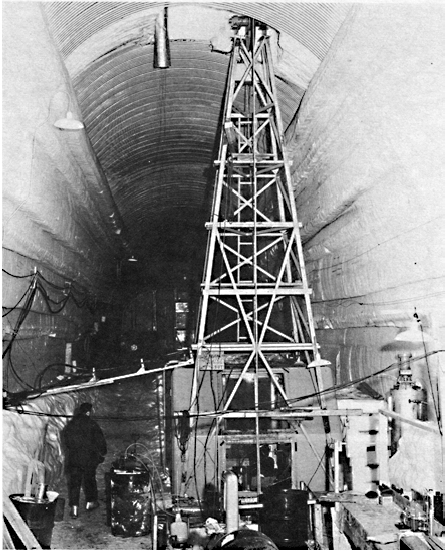
PROVIDENCE, R.I. [Brown University] —A study coauthored by a Brown researcher indicating that climate change is poised to release hazardous wastes at an abandoned U.S. military base in Greenland has led Vittus Qujaukitsoq, Greenland’s minister of industry, labour and trade and foreign affairs, to publicly demand that Denmark prepare to clean up the base and compensate residents who live near it.
In his statement, Qujaukitsoq referred to the study “The abandoned ice sheet base at Camp Century, Greenland, in a warming climate,” published this summer in Geophysical Research Letters and coauthored by Jeff Colgan, the Richard Holbrooke Associate Professor of Political Science and International Studies and associate professor of political science and international and public affairs at Brown’s Watson Institute.
According to the October 13 edition of the Danish newspaper Berlingske, Qujaukitsoq also demanded renegotiation of the Danish-American defense agreement in Greenland. Søren Espersen, member of Danish parliament and chairman of Denmark’s foreign policy committee, strongly objected to this demand, the newspaper reported.
The study, which Colgan wrote with an international team of colleagues, discussed both the historic and climatic context of the base and anticipated the potential for political acrimony.
“Our study highlights that Camp Century now possesses unanticipated political significance in light of anthropogenic climate change,” the researchers wrote. “The potential remobilization of wastes that were previously regarded as properly sequestered, or preserved for eternity is an instance, possibly the first, of a potentially new pathway to political dispute associated with climate change.”
History of Camp Century
During the Cold War, the U.S. government and Denmark signed a treaty to jointly defend Greenland, a Danish territory, from Soviet attack, Colgan said. Camp Century was established in Greenland in 1959 and was intended “to test the feasibility of building nuclear missile launch sites close enough to reach the Soviet Union,” according to an article in New Security Beat by Colgan and his coauthor William Colgan of York University in Ontario. Camp Century shuttered after eight years, in 1967.
“The base was abandoned with minimal decommissioning,” the researchers wrote in the Geophysical Research Letters study, “as engineering design of the era assumed that the base would be ‘preserved for eternity’ by perpetual snowfall.” According to the study, the Army Corps of Engineers removed the base’s nuclear reactor core but left the camp’s infrastructure and all other waste behind.
According to the study, waste left at the site includes diesel fuel, polychlorinated biphenyls (PCBs), biological waste including grey water and sewage in unlined sumps, and radiological waste in the form of coolant for the portable nuclear generator at the base.
Melting ice
Since the camp was decommissioned, Jeff Colgan said, “falling snow has buried the camp roughly 115 feet further underneath the ice.” Climatic projections, however, “predict increased surface melting in northwestern Greenland through 2100,” according to the study.
Colgan and Colgan point out that climate change has warmed the Arctic more than any other region on Earth. They and their coauthors predict that the waste, which they found covers 136 acres, could begin to reemerge in 2090.
“The PCBs are likely the biggest concern for animal and human health, if they are remobilized into surface waters,” according to Colgan and Colgan, who add that the pollutants could reach the ocean, disrupt marine ecosystems and accumulate in the food chain.
“It is very understandable that Greenland’s government wants clarity on who is responsible for the pollution and whether they will accept the eventual costs of environmental remediation,” Jeff Colgan said, but “as we emphasized in the study, there is no environmental risk in the near-term, and likely the pollution will stay buried in the ice for several decades at least. Right now, what’s needed is monitoring and research to assess if and when clean-up actions are necessary.”